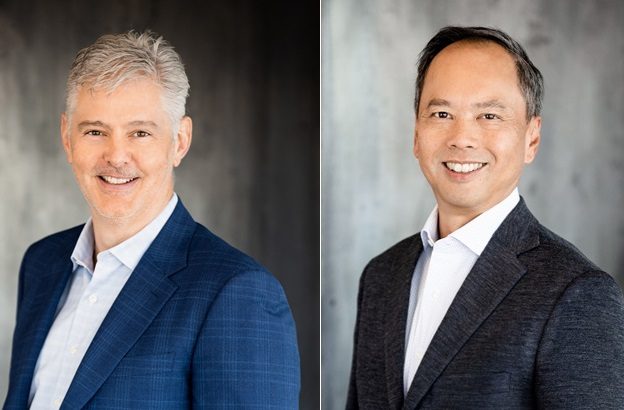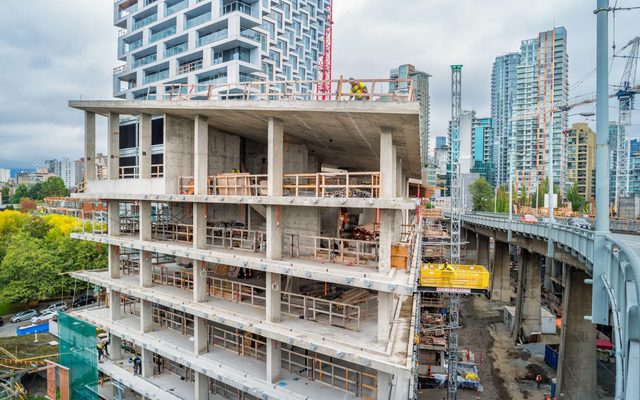Earlier this year, Revesco Properties Trust got back into the acquisitions game.
The fund invests in open-air retail properties in the U.S., where the firm says market dynamics will lead to better returns for its Canadian investors. This month, the firm is working on closing two deals for shopping centres in suburban Atlanta and Flagstaff, Ariz.
Green Street News spoke with Scott Lee and Chris Wood, founding partners of Revesco Properties and trustees of the fund, about the differences between the retail markets, including financing options, the depth of the retailer field, and consumer health.
Can you talk to me a little bit about some of the differences between the retail property market in Canada compared to the U.S. right now, and why you’re investing there? What’s the advantage?
Chris Wood (CW): Sure. First of all, it’s America, so there’s just more of everything. There are more people, there’s more shopping centres, there’s more markets, there’s more tenants, there’s more financing options.
It’s very similar in concept to buying retail in Canada, but it’s a much different environment and landscape. It’s just 10 times bigger.
Are there benefits when it comes to the financing of acquisitions?
CW: The Canadian lending market is highly concentrated with the institutions, whereas the U.S. has over 5,200 different lenders. Consequently, we can do a couple years of interest-only, convert to an amortization schedule, with seven-, 10- or 12-year terms if that’s what the asset requires. That kind of flexibility does not exist in Canada.
Scott Lee (SL): In Canada, what you’ll find in the shopping centre industry is that everything is priced for perfection. The concentration of ownership that Chris talked about earlier results in lower yields for similar assets in Canada.
“In Canada, what you’ll find in the shopping centre industry is that everything is priced for perfection”
Scott lee, revesco
As a consequence, it’s much more difficult for the smaller Canadian investor, as well as companies like Revesco, to generate the level of returns and provide income growth that our investors typically like, compared to what Revesco can achieve in the United States.

How would you describe the health of the Canadian retail property market right now?
CW: The Canadian market is still strong, but the returns are relatively low. We’ve got a reasonable amount of retail space in Canada resulting in low vacancy rates across the country with very little new supply. You just don’t have the choice of retailers that you do in the U.S.
In Canada, we have Costco. In the United States, they have Costco, they have BJ’s Wholesale Club, and Sam’s Club. There are more people. There’s more retailers to choose from.
And the U.S. property market?
CW: U.S. retail vacancy has been 8% to 10%, historically. People have just not been building a lot of retail since the power centre wave, which was pretty much the early 2000s.
In the last 15 years, you’ve had enclosed models that have really become defunct being demolished. A hundred plus a year for over a decade.
You’ve had very limited new construction. In the U.S., we see that trend continuing to the point where the vacancy rate just keeps dropping. Between Covid and e-commerce, a lot of weak retailers have exited the market. The remaining retailers are quite healthy.
Revesco just recently stopped its pause on acquisitions. What made you decide now was the time to start buying again?
SL: A couple of things. First of all, there are very few, if any, companies doing what we’re doing right now from a Canadian perspective. We created a fund that is specifically catered to Canadian investors to invest their money into open-air retail centres in the United States. You certainly can do that from an industrial or the residential perspective. So that’s something unique, and we see it as an opportunity.
Chris and I, because of our retail background, and our deep relationships and knowledge in the United States with U.S.-based retailers, have a unique advantage to be able to seek out those opportunities that we want to pursue, and create investment opportunities.
CW: The other thing is the rapid rise in interest rates. There was very little for people to do for 18 months because nothing made sense. It didn’t matter if you were a buyer or seller, or what the market valuation was, because people didn’t know how to value properties.
“We see deals that make sense today in a higher interest rate environment”
Chris wood, revesco
So, what we’re seeing now, and why we’re jumping back in, is that we see deals that make sense today in a higher interest rate environment. What does that really mean? We’re getting into these properties at a much lower basis than we would have 24 months ago, because debt is more expensive. And it takes a long time for the market to accept new valuations, especially when they’re not going in your favour.
That’s interesting because five years ago, everybody was saying brick and mortar’s dead. That seems to have turned around.
SL: Yeah, there’s a couple of reasons for that. … Covid certainly has cleaned out a lot of retailers that weren’t strong. And then … just the lack of new supply of retail space, whether it’s in Canada or the U.S., primarily related to the cost of construction and the difficulty of obtaining approvals for new retail in many areas.
“Brick and mortar is alive and well, and we know that 85% of all retail sales are going to come out of a store”
Chris Wood, revesco
CW: The cell phone is the best price checker on the planet. And whether you go to a Lululemon website, or you go to this little company called Amazon, everybody has access to different products that they never used to. What we found going into Covid was that nobody knew where that equilibrium between online and brick-and-mortar retail was going to land. That’s what Covid gave us.
At the height of Covid, 16% of U.S. retail sales were done online. That number now is kind of filtered down to 14%. And you need both. As a retailer, you need both. The customer demands both. Who wants to go and buy cleaning products, paper towels, toilet paper, a big-screen TV and try to stuff it in their vehicle to take it home? That’s what the internet was made for. Right?
Customers do both. What does that mean? It means bricks and mortar is alive and well, and we know that 85% of all retail sales are going to come out of a store. There’s a lot of other studies that show that when a retailer actually closes a store in a given trade area, not only do they lose the sales in that brick-and-mortar store, their online sales literally disappear. People just forget about it.
Where do you see things going in the next year or two in terms of the U.S. retail market?
CW: We’re super bullish for some of the reasons that we’ve highlighted. Lack of new construction, tenant demand, the ability to take good centres and make them great. More and more retailers are figuring out that they need a brick-and-mortar strategy. It doesn’t matter if it’s the mattress guys, footwear guys, anybody that was what we call a digital native retailer now has a brick-and-mortar strategy.
That’s just really good for the space of large shopping centres. People cannot spend more money just advertising on a Google search. It’s not profitable. So, what do they have to do? They have to get there and open stores.
“The Canadian consumer just seems to be under a lot of pressure from different areas”
Scott lee, revesco
SL: One of the things we talk about here internally is the Canadian consumer just seems to be under a lot of pressure from different areas – cost of housing, cost of food, taxes, mortgage debt, etc. The U.S. consumer seems to have more disposable income. But if you look at what happened to Canada in the last financial crisis, the Canadian consumer certainly wasn’t as hurt as badly as, say, the U.S. consumer back at that point in time.
So, I wonder whether the Canadian consumer has tapped itself out, if you will, since that point in time. Whereas the U.S. consumer, having gone through that traumatic situation back in 2008 to 2010, retained that memory in the back of their minds. And so, this time around, they’re a little better positioned.




